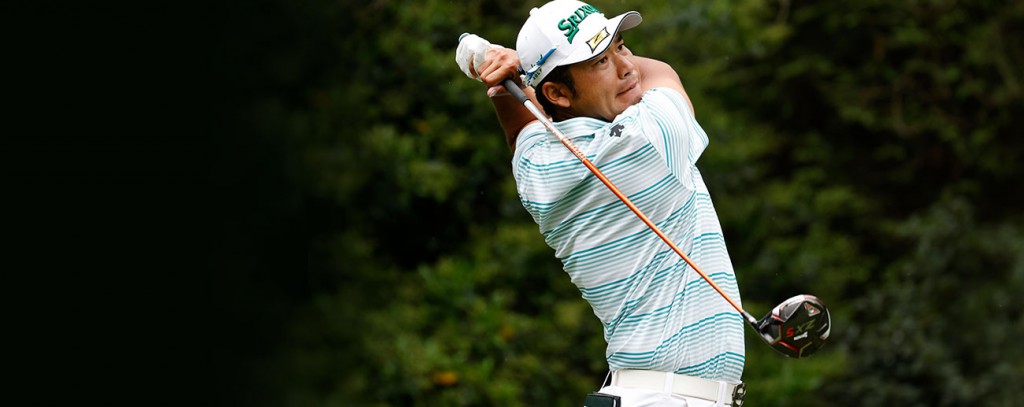Though some may claim this year’s Masters wasn’t exciting, lacking drama as Hideki Matsuyama had a commanding lead going to the final nine, I beg to differ. To me, how someone closes out a major is always captivating. The thought of a collapse is lurking in our minds because we’ve seen it before. I didn’t want to see Matsuyama join the sad storylines of Greg Norman, Ed Sneed, Kenny Perry or even Jordan Spieth when they all lost the Masters.
I wanted to see someone win the Masters not lose it.
One could argue Matsuyama won the green jacket via his Saturday round where he went 6-under par in his last eight holes en route to a clean card of 65. It gave him a four shot lead which he wouldn’t relinquish. But closing out the Masters is hard work regardless of the lead.
I’ve always been intrigued with looking at a player’s statistics for the week to help explain his road to victory. Here are some key metrics:
—Matsuyama was seventh in the all-important Greens in Regulation statistic, hitting 50 out of 72 greens. Jordan Spieth led the field with 56 GIR.
—In putting, Matsuyama was T-10th with 114 putts in spite of four three-putts. Jose Maria Olazabal at age 55 led the field with 104.
—Curiously at a course where driving distance is supposedly a prerequisite, Matsuyama was T-47 with an 289 yard average. Cameron Champ was the week’s leader at 324 yards, a mere yard ahead of Bryson DeChambeau.
—Two other key stats for the Masters winner: he never carded a score higher than a bogey for the tournament. In contrast, Spieth had both a triple and a double bogey. Schauffele had that ruinous triple bogey on Sunday at 16. Matsuyama also had three eagles last week.
Of course, statistics don’t reveal what’s inside a golfer, how he performs under pressure and manages his game and emotions. Bearing the weight of a nation on his shoulders, Matsuyama led the field in this category. He’s the Masters champion, the pride of Japan.
**********************************************************************************
Other observations:
—I received several texts last week asking me why Augusta National’s greens were so brown. I answered saying that’s the result of tournament officials shaving down the greens to the bare grass. On Thursday, they may have been the most firm and fast greens in well over ten years. In fact, the Masters grounds staff hand-watered those greens on Thursday night, worried that they might lose some of the them. But then the rains came and green grass sprouted.
As mentioned numerous times in the pre-tourney interviews, Augusta National’s sole defense against the power of the modern player is its ultra-slick surfaces and that includes the slopes around the greens, as seen at the par-five 13th and 15th.
—The other reason why the brown greens were so apparent was due to the deployment of drones in televising the tournament. The aerial shots readily exposed the parched greens. I liked the new views lent by the drones. My favorite shot was when the drone captured players and their caddies heading down the fairway. The simplicity was marvelous.

—All in all, ESPN and CBS both did their usual commendable job in covering the Masters. More and more, I favorthe golf commentators of ESPN and NBC over those of CBS. For one, I’m tired of the use of “accented” voices on CBS to supposedly heighten interest in the coverage. I’m not xenophobic, but there’s something comforting and familiar when listening to American vernacular and idiom used in golf commentary.
If Nick Faldo hadn’t won three green jackets, he never would’ve been hired by CBS who wanted someone with Masters credibility. Yes, he’s got the cred but not the language of the street. (He’d never take the job but Phil Mickelson would be ideal.)
Saving the day somewhat for CBS in this regard was Verne Lundquist, the veteran commentator.
—Finally, credit Augusta National for its efforts over the last ten years and more to use the incredible allure of the Masters to grow the game around the globe. A decade ago, Matsuyama was low amateur at the Masters after qualifying by winning the Asia-Pacific Amateur Championship, a tournament launched by the club, the R & A and the USGA.
I wouldn’t be surprised to see a future Masters champion coming from the alumni ranks of the Latin America Amateur Championship similarly organized by those same bodies. My bet? Joaquín Niemann who claimed the title in 2018. He finished + 4 this year.
Image courtesy of Srixon Golf

